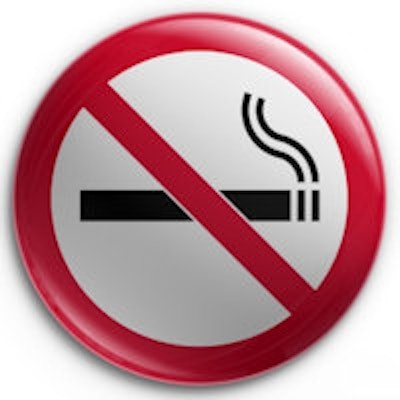
Most family physicians say they discuss CT lung cancer screening with their patients, but actual screening referrals are rare, even for patients at high risk, according to a study published online June 13 in Cancer.
Lead author Jennifer Ersek, Jan Eberth, PhD, and colleagues from the University of South Carolina sent a 32-item questionnaire to family physicians in South Carolina to elicit their knowledge of lung cancer screening recommendations and their practice patterns. Among the 101 participants, most had incorrect knowledge of screening recommendations, and they recommended lung cancer screening to far fewer patients than were covered by clinical guidelines.
"There are gaps in physician knowledge about screening guidelines and reimbursement, and this indicates a need for further educational outreach," the authors wrote. "The development of decision aids may facilitate shared decision-making discussions about screening, and targeted interventions may improve knowledge gaps" (Cancer, June 13, 2016).
Not reaching patients
Lung cancer remains the leading cause of cancer death in the U.S., with more than 221,000 new cases in 2015 and more than 158,000 deaths, including almost 3,000 lung cancer deaths in South Carolina alone. Based on an estimated mortality reduction of 20% in the National Lung Screening Trial (NLST), in 2015 the U.S. Centers for Medicare and Medicaid Services (CMS) approved reimbursement for low-dose CT (LDCT) lung cancer screening, along with payment for a shared-decision-making visit to discuss the potential risks and benefits with the patients.
But are family physicians actually referring patients? The current study involved a questionnaire sent to members of the South Carolina Academy of Family Physicians (SCAFP); the corresponding national group, the American Academy of Family Physicians (AAFP), has not rushed to implement screening due to persistent doubts about its effectiveness, the authors noted.
"As one of the only organizations that has not directly endorsed LDCT screening, we felt that surveying members of the American Academy of Family Physicians was very important," Eberth told AuntMinnie.com in an email.
The AAFP is concerned that CT lung screening in community practices may not replicate the findings of large randomized controlled trials, and there are concerns about the long-term effect of radiation exposure and about unnecessary follow-up procedures.
"While these concerns have some validity, 76% of South Carolina AAFP members we surveyed agreed that the benefits of screening outweigh the cost, and over 50% reported having patients ask about screening in the past year," Eberth said.
Family practice feelings
The study looked at knowledge, attitudes, and practice patterns in lung cancer screening "among family physicians in general and among AAFP physician members in particular," the authors wrote.
The questionnaire was administered online and in print and contained a variety of question types, including multiple choice, Likert scale, and short answers. It was designed in early 2015 and updated with additional questions when CMS issued final rules for lung cancer screening.
The physicians were asked about demographics, screening knowledge, referral practice patterns, and attitude toward screening, such as risks, benefits, and cost-effectiveness. They were also given clinical vignettes and asked about their likelihood of recommending screening for each scenario.
Eighty-five physicians started the electronic questionnaire and 65 completed all questions. Sixteen physicians completed paper questionnaires, with 15 answering all questions, resulting in a total of 101 questionnaires analyzed for the study.
Demographics favored older men: 73% of participants were male, 88% were Caucasian, 86% were older than 40 years, and 85% had graduated from medical school more than 10 years earlier.
Unclear on screening
Knowledge of screening was lacking, the authors reported. Just 5% of family practice doctors said that Medicare/Medicaid covered the cost of screening. Only 36% said screening should be performed every year for high-risk patients, while the choices of screening every two or three years each garnered 25% of the respondents' votes.
"Despite ... interest from their patients, fewer patients were referred for screening than inquired about getting the test," Eberth said.
Physicians generally responded incorrectly or were unsure about screening recommendations. The U.S. Preventive Services Task Force, American Cancer Society, National Comprehensive Cancer Network, and American College of Radiology support the use of LDCT for lung cancer screening. However, fewer than half of the physicians knew that these organizations recommend lung cancer screening.
The AAFP doctors didn't even know the position of their own organization. The AAFP does not currently recommend LDCT screening, and 70% of the physicians reported that they were unsure about the AAFP guidelines or believed incorrectly that the AAFP recommends screening.
"A variety of factors may have hampered physicians from referring more patients for screening, including uncertainty about reimbursement and billing procedures, screening recommendations (including eligibility criteria), and the competing priorities and health concerns of their patients," Eberth told AuntMinnie.com.
Fully 63% of the family practice physicians were unsure whether Medicare/Medicaid covered low-dose CT lung cancer screening, even though at the time they completed the questionnaires, CMS had already issued its coverage determination.
In a clinical vignette about a patient with secondhand smoking exposure and no personal smoking history, more than three-quarters of the doctors -- 78% -- correctly recommended no screening. On the other hand, 48% of physicians incorrectly recommended screening with chest x-ray or low-dose CT in a vignette describing a 70-year-old former smoker who had quit 20 years ago with a 30-year pack history, a scenario in which no organization would recommend screening.
Most of the respondents (59%) said they had time to stay current with screening guidelines, but more than half had referred none or only one patient for screening in the past year. Fortunately, 98% reported correctly that screening increases the chances of detecting early-stage disease.
Regarding the risks associated with screening, 88% cited unnecessary diagnostic procedures, followed by stress and anxiety (52%), and 50% were concerned about unnecessary radiation exposure. One-fourth felt that a positive finding rarely leads to a lung cancer diagnosis.
Nearly three-fourths of the respondents said they discussed the risks and benefits of screening, but 24% did so only occasionally. Half said they discussed risks and benefits and then let the patient decide. Only 21% presented the risks and then recommended screening to their high-risk patients. If the patient declined screening, 63% said they didn't continue to encourage screening.
Too soon?
CMS didn't announce the specific codes that providers could use to bill until late 2015, after the survey was completed, Eberth noted. Also, because CMS implemented several other recommendations such as data registries and smoking cessation programs, it has taken practices time to get up and running.
This fall, the investigators will conduct a national survey of primary care physicians and nurse practitioners to explore whether the trends observed in South Carolina are seen more broadly.
"In addition to looking at knowledge and attitudes toward LDCT screening, we will also be investigating potential barriers to shared decision-making and screening referrals," she said.




















